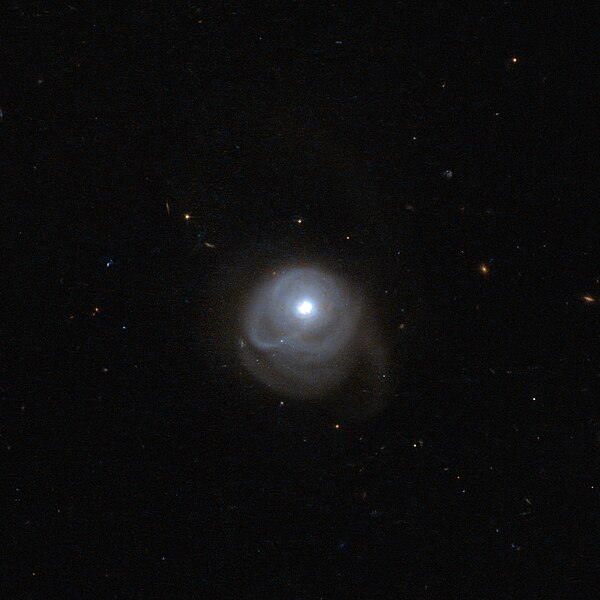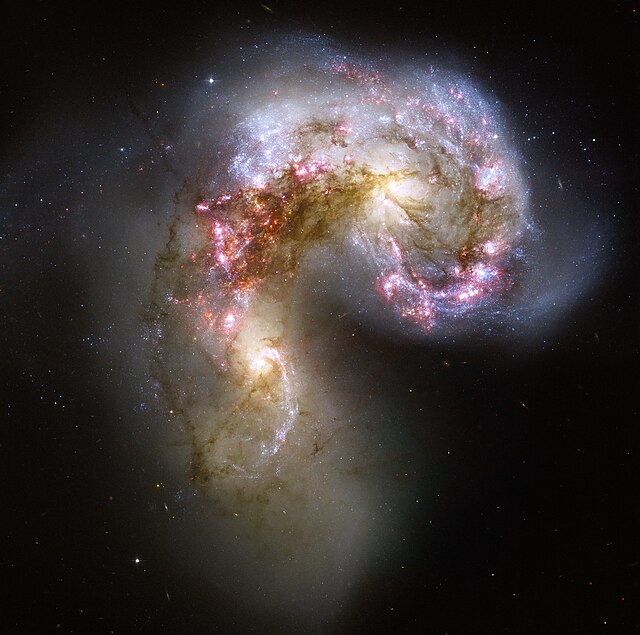Luminous infrared galaxies or LIRGs are galaxies with luminosities, the measurement of brightness, above 1011 L☉. They are also referred to as submillimeter galaxies (SMGs) through their normal method of detection. LIRGs are more abundant than starburst galaxies, Seyfert galaxies and quasi-stellar objects at comparable luminosity. Infrared galaxies emit more energy in the infrared than at all other wavelengths combined. A LIRG's luminosity is 100 billion times that of the Sun.
IRAS 14348-1447 is an ultraluminous infrared galaxy, located over a billion light-years away.
South America Galaxy taken by the Hubble Space Telescope
2MASX J05210136-2521450.
Ultraluminous Infrared Galaxy IRAS 19297-0406
A starburst galaxy is one undergoing an exceptionally high rate of star formation, as compared to the long-term average rate of star formation in the galaxy, or the star formation rate observed in most other galaxies.
The Antennae Galaxies are an example of a starburst galaxy occurring from the collision of NGC 4038/NGC 4039. Credit: NASA/ESA.
Light and dust in a nearby starburst galaxy
Artist's impression of a galaxy undergoing a starburst.
SBS 1415+437 is a WR galaxy located about 45 million light-years from Earth.








